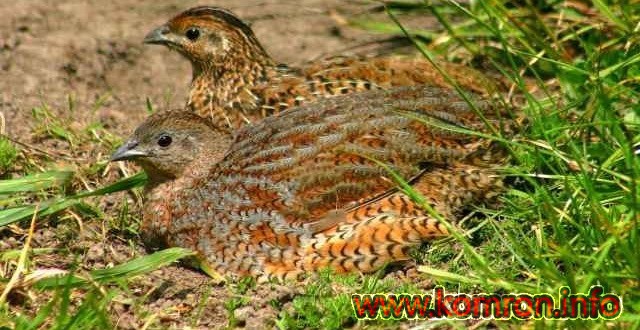

(2012) • Total 649,429 • Density 23,000/km 2 (60,000/sq mi) () (+251) 58 Bahir Dar (: ባሕር ዳር, Baḥər Dar, 'sea shore') is the former capital of province and the current capital of the in. Administratively, Bahir Dar is a.
Watch the latest Dokhtari Ba Rosari Ghermez series on GEM TV Series. All videos are free to watch in HD Quality.
Bahir Dar is one of the leading tourist destinations in Ethiopia, with a variety of attractions in the nearby and river. The city is known for its wide avenues lined with palm trees and a variety of colorful flowers. In 2002 it was awarded the UNESCO Cities for Peace Prize for addressing the challenges of rapid urbanization. Contents • • • • • • • • • • • • • • • • • History [ ] Origins [ ] Originally the settlement was called Bahir Giyorgis. In the 19th century, Bahir Dar was visited by Belgian, French, British and Italian travelers, who described it alternatively as a village or a town. The Italian traveller Mario Alamanni (1891) estimated its population between 1,200 and 1,600. 20th century [ ] During the early 20th century, the British, desiring to construct a barrage at the outlet of Lake Tana, dispatched several study teams, such as those of Dupis (1902), Grabham and Black (1920-21) and Cheesman (1926-34).
In 1930 the Ethiopian Government sent to Bahir Dar its own team of experts, who described Bahir Dar as a village with considerable trading activity, with a population from the interior as well as from Lake Tana ports such as Zege. At this time Bahir Dar was characterized by various traditional settlement areas, each of which was distinguished by the social position its members occupied.
The kahenat (clergy) and balabbat communities were the most important. In addition, three groups of tenant-craftsman communities, tanners, Muslims weavers and the Weyto stone-mill grinders, lived on balabbat lands. Although all were economically interdependent, there was no intermarriage between the tenant communities or between them and the balabbat and kahenat. In 1936, Bahir Dar was occupied by the Italians, who gave it modern urban features. Abolishing communal family ownership of land, they instituted private ownership. Alienating the balabbats from their rist, the allocated land for administration, the army, an airstrip and port facilities.
New residential and commercial zones were demarcated. Bahir Dar was connected by motor-boats with other Lake Tana ports and by motor roads with Gonder, Debre Marqos and Addis Ababa.

The physical and social appearance of Bahir Dar was considerably changed. New settlement patterns emerged: and Italian camp, a Muslim community and a Weyto quarter, while the tanners' quarter remained unaffected. Bahir Dar became a melting-pot of different people and cultures. In the commercial zone, different types of shops, tea-rooms, tailor shops, bars and restaurants run by Italians, Arabs, Somalis and Sudanese made their first appearance. Megaman battle network 7 rom.
Ethiopian participation in this realm was insignificant. The Italians gave Bahir Dar political importance making it the administrative center of the Lake Tana southern territories. They also showed interest in the possibility of developing the Lake Tana and Blue Nile basic agriculturally and of exploiting their waters for hydroelectric power. In 1941, the Ethiopian Government was reinstated. It made Bahir Dar a capital, first at a sub-district and then at a district level. Various offices and public services were set up. In 1945 Bahir Dar was raised to the status of a municipality.
- Author: admin
- Category: Category

(2012) • Total 649,429 • Density 23,000/km 2 (60,000/sq mi) () (+251) 58 Bahir Dar (: ባሕር ዳር, Baḥər Dar, 'sea shore') is the former capital of province and the current capital of the in. Administratively, Bahir Dar is a.
Watch the latest Dokhtari Ba Rosari Ghermez series on GEM TV Series. All videos are free to watch in HD Quality.
Bahir Dar is one of the leading tourist destinations in Ethiopia, with a variety of attractions in the nearby and river. The city is known for its wide avenues lined with palm trees and a variety of colorful flowers. In 2002 it was awarded the UNESCO Cities for Peace Prize for addressing the challenges of rapid urbanization. Contents • • • • • • • • • • • • • • • • • History [ ] Origins [ ] Originally the settlement was called Bahir Giyorgis. In the 19th century, Bahir Dar was visited by Belgian, French, British and Italian travelers, who described it alternatively as a village or a town. The Italian traveller Mario Alamanni (1891) estimated its population between 1,200 and 1,600. 20th century [ ] During the early 20th century, the British, desiring to construct a barrage at the outlet of Lake Tana, dispatched several study teams, such as those of Dupis (1902), Grabham and Black (1920-21) and Cheesman (1926-34).
In 1930 the Ethiopian Government sent to Bahir Dar its own team of experts, who described Bahir Dar as a village with considerable trading activity, with a population from the interior as well as from Lake Tana ports such as Zege. At this time Bahir Dar was characterized by various traditional settlement areas, each of which was distinguished by the social position its members occupied.
The kahenat (clergy) and balabbat communities were the most important. In addition, three groups of tenant-craftsman communities, tanners, Muslims weavers and the Weyto stone-mill grinders, lived on balabbat lands. Although all were economically interdependent, there was no intermarriage between the tenant communities or between them and the balabbat and kahenat. In 1936, Bahir Dar was occupied by the Italians, who gave it modern urban features. Abolishing communal family ownership of land, they instituted private ownership. Alienating the balabbats from their rist, the allocated land for administration, the army, an airstrip and port facilities.
New residential and commercial zones were demarcated. Bahir Dar was connected by motor-boats with other Lake Tana ports and by motor roads with Gonder, Debre Marqos and Addis Ababa.

The physical and social appearance of Bahir Dar was considerably changed. New settlement patterns emerged: and Italian camp, a Muslim community and a Weyto quarter, while the tanners' quarter remained unaffected. Bahir Dar became a melting-pot of different people and cultures. In the commercial zone, different types of shops, tea-rooms, tailor shops, bars and restaurants run by Italians, Arabs, Somalis and Sudanese made their first appearance. Megaman battle network 7 rom.
Ethiopian participation in this realm was insignificant. The Italians gave Bahir Dar political importance making it the administrative center of the Lake Tana southern territories. They also showed interest in the possibility of developing the Lake Tana and Blue Nile basic agriculturally and of exploiting their waters for hydroelectric power. In 1941, the Ethiopian Government was reinstated. It made Bahir Dar a capital, first at a sub-district and then at a district level. Various offices and public services were set up. In 1945 Bahir Dar was raised to the status of a municipality.